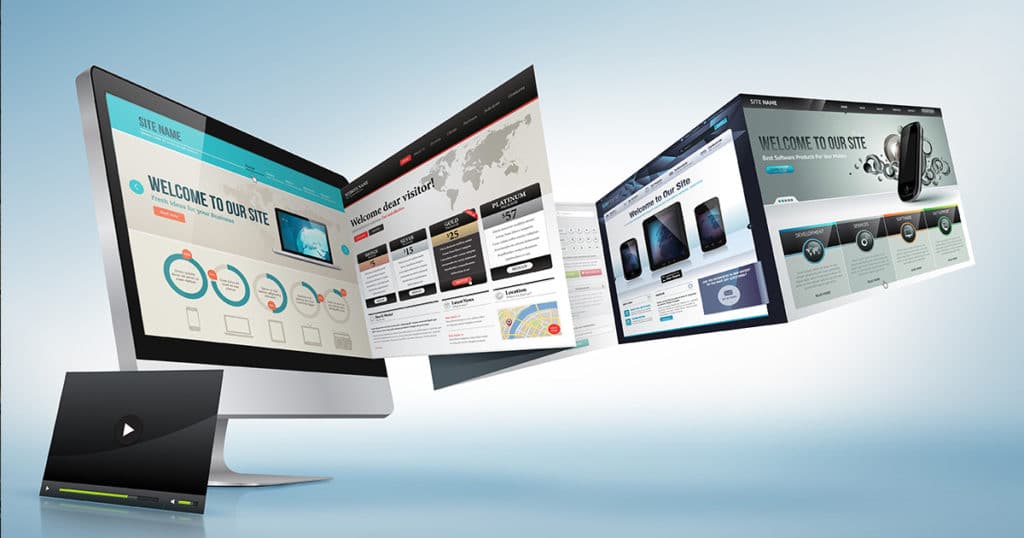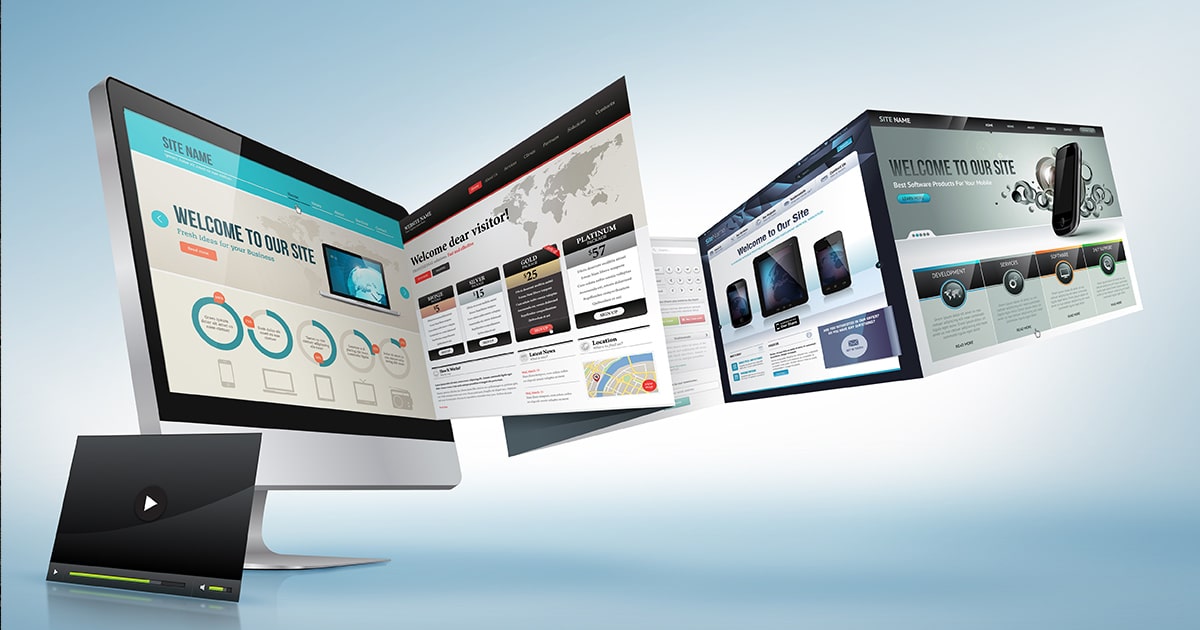Have you ever wondered how easy it is to set up a legitimate looking website? In this post, I’ll demonstrate how a basic understanding of HTML and CSS, along with a few hours, can be used to build a trustworthy looking website.
 I know many organizations evaluate the credibility of a digital vendor based on the looks of their website, but today, this is flawed. WordPress, and popular front-end frameworks such as Bootstrap and Foundation, have significantly lowered the technical hurdles to creating simple, professional looking websites. To help you understand just how simple and cheap it can be to put up a basic website, I built one for a fictitious SEO company. In this post, I’ll detail how over the course of a few hours I was able to build a legitimate looking SEO website for just $53.87.
I know many organizations evaluate the credibility of a digital vendor based on the looks of their website, but today, this is flawed. WordPress, and popular front-end frameworks such as Bootstrap and Foundation, have significantly lowered the technical hurdles to creating simple, professional looking websites. To help you understand just how simple and cheap it can be to put up a basic website, I built one for a fictitious SEO company. In this post, I’ll detail how over the course of a few hours I was able to build a legitimate looking SEO website for just $53.87.
My aim here is to help small business owners, and others, understand how an individual with bad intentions, and relatively limited technical expertise, can put together a professional looking website. I’ll wrap the post up by showing how knowing some simple PHP scripting can enable a marketer to build a dynamic sales landing page for an added wow factor.
How They Get Your Contact Information
As part of the registration for your domain (website URL), you must supply your name, phone number, physical address and email address. This information is stored in what’s call a WHOIS database. If you don’t use private registration (sometimes called proxy registration), this information is out there for anyone with an Internet connection to access. Client list: check. Price: free.
Building Always Right SEO’s Website
First, I needed a domain. At the suggestion of a coconspirator, I purchased AlwaysRightSEO.com (and registered it privately). The domain costs 99 cents for one year through 1&1.
Running Project Cost: $0.99
Running Time Invested: 15 minutes
Next, came the most challenging part: writing content. Over the course of three days, I spent about two and a half hours writing the content for the website. Once the content was written, I had an idea of how I wanted the website to look; so I went looking for a template. If you’re unfamiliar with the concept of a website template think of it like PowerPoint template: a professional has put together a design that looks professional and all you have to do is add content. You can find website templates for free, or pay for one through a marketplace, like ThemeForest. Not wanting to go down the WordPress rabbit-hole on this project, I decided just to do a flat website. I picked up a free Bootstrap landing page template and an inner page template from StartBootstrap.com.
Special software makes it easier to modify the HTML and CSS that creates the look and feel of the templates, and while you can spend a lot of money on something like Dreamweaver, I like the free Atom editor from the good folks over at GitHub.
Project Cost: $0.99
Time Invested: Under 4 hours
The web is visual and images can boost or destroy a website’s credibility. There are plenty of places to get free stock art, however, I don’t always trust the free stock art sites to have the appropriate releases; so to be on the safe side, I went with a subscription to BigStock Photo. As I was getting ready to check prices on other sites, BigStock offered a plan that got me ten images for $29. Someone who doesn’t care about copyright laws could do this for free.
Project Cost: $29.99
Time Invested: Around 5 hours
At this point in the project, I have my copy written for the website, I’ve downloaded the templates and I’ve purchased images. Now I can pull it all together and I’ve got a website! Making these changes is relatively simple and straightforward if you understand HTML and CSS. I spent a little over 3 hours adding the images and text to the templates, adjusting the Font Awesome icons and applying the CSS to the inner pages.
Project Cost: $29.99
Time Invested: Just more than 8 hours, a full day’s work.
With the website complete, it’s time to put it on the Internet for the world to see. There’s no shortage of economy hosting providers out there with plans ranging from $2 to $8 per month. iPage was the cheapest I found at $1.99/month if you purchased 12 months. I run my own virtual private server, and I’m hosting the site there, but for the sake of this example, let’s say I paid iPage for 12 months of hosting.
Total Project Cost: $53.87
Total Time Invested: About 9 hours
And there you have it: for the same price as good steak dinner and 9 hours of work, I’ve created a professional looking SEO website that promises to deliver nothing that will help you achieve your business objectives. For an unscrupulous individual who’s looking to make quick money, the payoff on this investment is awesome. I’ve seen crummy SEO companies with $800/month fees and others that charge $2100 for an SEO audit. Not bad margins given the limited upfront investment to get started.
While this example has been an SEO company, my intention here is not to diminish the importance of SEO but rather to shine a light on the bad actors in the SEO space. As I wrote previously, search engine optimization is a necessary part of any business’s online strategy and there are a number of great SEO vendors out there. If you don’t understand the workings of the web and SEO, before being wowed by a professional looking website, take the time to evaluate the claims made by the vendor.
Bonus Round: Using PHP to Create a Personalized Landing Page
Personalized landing pages can add persuasive touch to any marketing effort. In the realm of SEO, the WHOIS database supplies everything needed to create a personalized page. With a little PHP, I created a landing page that will dynamically display the name and domain of the person I’m “targeting” for SEO services.
Since it’s always a sound career move to troll your boss, I decided to make him the target of this campaign. I’m passing his name and domain using URL parameters (the stuff after a question mark in a URL). If you want to see the landing page in action, you can create your own using this generator. Don’t worry, I’m not storing any information entered into the generator, so go have fun.
Finally, I needed to get my boss to the page. My plan was to have a fancy HTML email, but I quickly discovered if you’re not using a service like MailChimp, creating your own HTML email isn’t all that quick. The good folks at Emailology have a great boilerplate and a lot of helpful advice, although, I ended up going with something much simpler (for authenticity’s sake; not because Sunday Night Football came on). No word yet on how my boss is taking the Always Right SEO website.
Final Thoughts
Today, one can no longer evaluate the legitimacy of a business based solely on the aesthetics of their website. As I’ve demonstrated, it doesn’t take a lot of specialized knowledge, time or money to create a professional looking website. The best way for small business owners to protect their business from scammers and know-nothings is to take a close look at a website’s content, do a little bit of research on their own about the services the vendor is offering and seek out reviews on third party websites such as Google.

